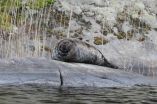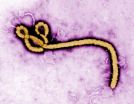(Press-News.org) Physics researchers at Virginia Commonwealth University have discovered that most of the electrolytes used in lithium-ion batteries — commonly found in consumer electronic devices — are superhalogens, and that the vast majority of these electrolytes contain toxic halogens.
At the same time, the researchers also found that the electrolytes in lithium-ion batteries (also known as Li-ion batteries) could be replaced with halogen-free electrolytes that are both nontoxic and environmentally friendly.
"The significance [of our findings] is that one can have a safer battery without compromising its performance," said lead author Puru Jena, Ph.D., distinguished professor in the Department of Physics of the College of Humanities and Sciences. "The implication of our research is that similar strategies can also be used to design cathode materials in Li-ion batteries."
The article, "Superhalogens as Building Blocks of Halogen-free Electrolytes in Li-ion Batteries," by Jena, postdoctoral researcher Santanab Giri, Ph.D., and then-graduate student Swayamprabha Behera, Ph.D., will appear in a forthcoming issue of the chemistry journal Angewandte Chemie International Edition, which has posted the study online.
Jena said he hopes that the article's findings will lead to production of safer, less toxic batteries.
"We hope that our theoretical prediction will stimulate experimentalists to synthesize halogen-free salts which will then lead manufacturers to use such salts in commercial applications," he said.
The researchers also found that the procedure outlined for Li-ion batteries is equally valid for other metal-ion batteries, such as sodium-ion or magnesium-ion batteries.
Jena became interested in the topic several months ago when he saw a flyer on Li-ion batteries that mentioned the need for halogen-free electrolytes.
"I had not done any work on Li-ion batteries at the time, but I was curious to see what the current electrolytes are," he said. "I found that the negative ions that make up the electrolytes are large and complex in nature and they contain one less electron than what is needed for electronic shell closure."
Jena had already been working for more than five years on superhalogens, a class of molecules that mimic the chemistry of halogens but have electron affinities that are much larger than that of the halogen atoms.
"I knew of many superhalogen molecules that do not contain a single halogen atom," he said. "My immediate thought was first to see if the anionic components of the current electrolytes are indeed superhalogens. And, if so, do the halogen-free superhalogens that we knew serve the purpose as halogen-free electrolytes? Our research proved that to be the case."
INFORMATION:
The researchers' work was funded partially by a $615,000 grant from the Department of Energy to study "Atomic Clusters – Bare, Coated and Supported," (ER45579) as well as by the VCU Presidential Research Quest Fund.
Rockville, MD –Disaster Medicine and Public Health Preparedness Journal has released a novel, informative article that speaks to volunteers within the Ebola epidemic. The article, contributed by a consortium of Boston-based hospitals, is entitled Sign Me Up: Rules of the Road for Humanitarian Volunteers during the Ebola Outbreak. The authors paint an honest picture of volunteer circumstances, and ask those considering volunteering to not make the decision lightly. They insist that the "global healthcare community must and will rise to serve."
The World Health Organization ...
NASA's TRMM satellite saw that Tropical Storm Ana was still generating moderate rainfall is it pulled away from Hawaii. The next day, NASA's Aqua satellite saw that wind shear was having an effect on the storm as it moved over open ocean.
On Oct. 24, Ana had moved far enough away from land areas that there were no watches or warnings in effect.
The Tropical Rainfall Measuring Mission (TRMM) satellite flew over tropical storm Ana on October 22, 2014 at 1935 UTC (about 8:30 a.m. HST local time). Ana formed over ten days ago but after moving to the northwest of the Hawaiian ...
BUFFALO, N.Y. -- When partnering with larger companies, startups with a small number of carefully chosen alliances will reap the most benefits, according to new research from the University at Buffalo School of Management.
Forthcoming in Organization Science, the study found that by aligning with established companies, a young firm gains valuable access to additional resources and markets. However, as a startup adds more outside partners, eventually the firm's internal capability will weaken and the cost of maintaining its alliances will exceed any remaining benefits.
"Partnerships ...
NOAA's GOES-East satellite has been keeping an eye on the remnants of Tropical Depression 9.
On Oct. 24 at 14:30 UTC (10:30 a.m. EDT) GOES-East captured a visible image of clouds and thunderstorms associated with former Tropical Depression 9,, centered over the southeastern Yucatan Peninsula of Mexico, Belize, and the adjacent northwestern Caribbean Sea.
NOAA's National Hurricane Center (NHC) noted that surface pressures were rising in the area, and the re-development of the former depression is unlikely. The remnants are expected to continue moving east over the ...
Endurance athletes taking part in triathlons are at risk of the potentially life-threatening condition of swimming-induced pulmonary oedema. Cardiologists from Musgrove Park Hospital, Taunton, writing in the Journal of the Royal Society of Medicine, say the condition, which causes an excess collection of watery fluid in the lungs, is likely to become more common with the increase in participation in endurance sports. Increasing numbers of cases are being reported in community triathletes and army trainees. Episodes are more likely to occur in highly fit individuals undertaking ...
A survey published this year found that over 50% of final year veterinary students in the UK do not feel confident either in discussing orodental problems with clients or in performing a detailed examination of the oral cavity of their small animal patients.1 Once in practice, things don't always improve and, anecdotally, it seems many vets dread feline dental procedures.
UK-based practitioners, Rachel Perry and Elise Robertson, who themselves felt woefully ill-prepared for feline dentistry as new graduates, have joined forces in an initiative to plug this educational ...
The Ebola epidemic is continuing to spread, particularly in West Africa. According to the latest report by the World Health Organisation (WHO) dated 17 October, 9,216 cases of Ebola have been recorded and 4,555 people have died of the virus.
With the current situation of the Ebola epidemic, it quickly became necessary for French research to be mobilised rapidly.
In August 2014, the French Minister of Health and Secretary of State for Higher Education and Research made Aviesan responsible for preparing and organising the response of French research to infectious emergencies. ...
A collaboration between researchers at the Universities of Leicester and Innsbruck has developed a completely new way of forming charged molecules which offers tremendous potential for new areas of chemical research.
Professor Andrew Ellis from our Department of Chemistry has been working for several years with colleagues at the Institute of Ion Physics in Austria on exploring the chemistry of molecules inside liquid helium. The team's latest and most startling discovery is that helium atoms can acquire an excess negative charge which enables them to become aggressive ...
The critically endangered Saimaa ringed seal, which inhabits Lake Saimaa in Finland, has extremely low genetic diversity and this development seems to continue, according to a recent study completed at the University of Eastern Finland. In her doctoral dissertation, Mia Valtonen, MSc, analysed the temporal and regional variation in the genetic diversity of the endangered Saimaa ringed seal. The population is only around 300 individuals divided into smaller sub-populations and with very little migration among between them.
The study developed a method allowing the identification ...
BUFFALO, N.Y. — A new study is helping to rewrite Ebola's family history.
The research shows that filoviruses — a family to which Ebola and its similarly lethal relative, Marburg, belong — are at least 16-23 million years old.
Filoviruses likely existed in the Miocene Epoch, and at that time, the evolutionary lines leading to Ebola and Marburg had already diverged, the study concludes.
The research was published in the journal PeerJ in September. It adds to scientists' developing knowledge about known filoviruses, which experts once believed came ...




